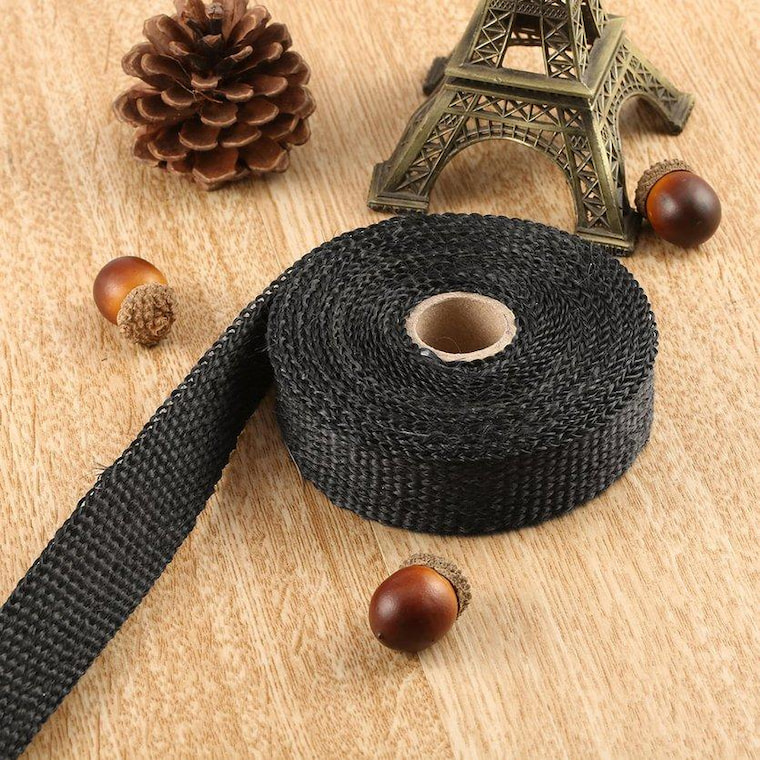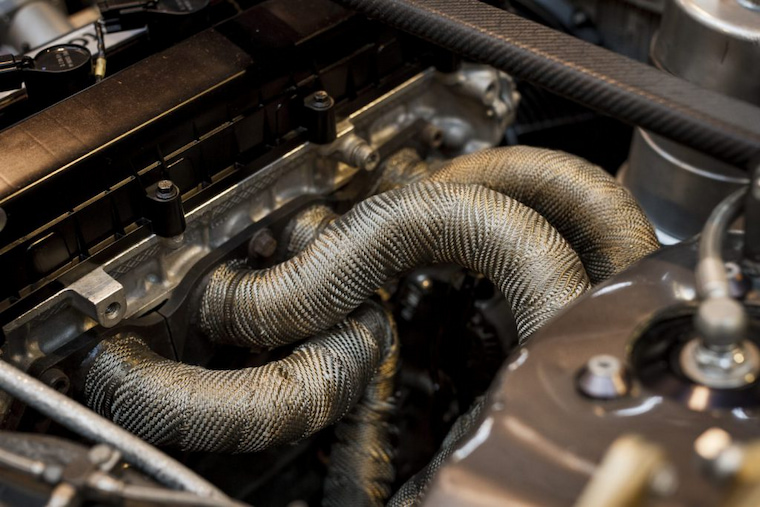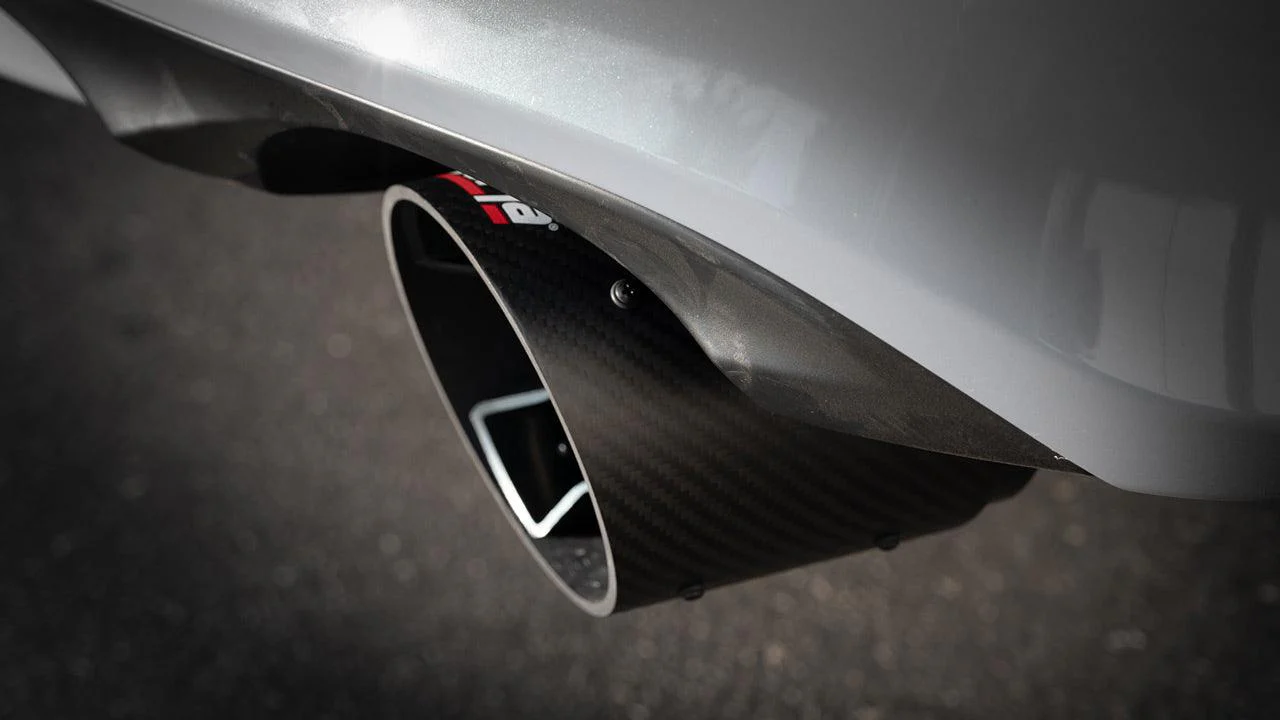Automotive
Benefits of Exhaust Wrap Tape and Things to Pay Attention to When Wrapping
No matter whether you’re driving a street car, race car or you do a bit of both, wrapping your exhaust in heat tape provides quite a few benefits that can improve reliability, longevity and performance. Any time you can reduce the amount of heat being released from your exhaust system, from the headers to the tailpipe, your car will thank you for it.
But before I get to the benefits of exhaust wrap tape, it’s important to debunk a myth that’s been going around. There’s a misconception that wrap tape can destroy your headers and pipes. That can’t be further than the truth. The purpose of exhaust wrap is to keep heat in the headers and pipes, which is the key reason why you get performance and reliability benefits. It’s true that the pipes will get much hotter than if they were unwrapped, but they should be able to withstand that heat anyway. That’s why it’s important to shop for quality pipes and headers, preferably ones made of quality stainless or aluminised steel.
Benefits of Exhaust Wrap Tape
Improved Reliability
As aforementioned, heat exposure is one of the biggest factors that wear down parts in your vehicle. It degrades your plastics, rubber and fluids most, but other parts will feel its effects either in the short or long term. Installing exhaust wrap tape reduces the amount of heat radiated by the exhaust system. As a result, the parts around the system aren’t exposed to as much heat, significantly reducing the amount of wear. There are quite a few rubber hoses and lines around the exhaust, as well as metal fluid lines (fuel and brake lines).

Improved Performance
Exhaust wrap can improve your car’s performance in a few different ways. For instance, it helps increase exhaust gas temperatures with its insulating properties, keeping more heat inside the headers and pipes. This results in increased gas velocity, meaning the amount of gas getting scavenged from the combustion chamber is improved, leading to less power-robbing backpressure during the combustion cycle. Moreover, in cars with turbos, the increased exhaust gas temperature results in reduced turbo lag and spool time, allowing you to get the most out of your turbo.
Additionally, after installing an exhaust wrap, you lower the overall temperature under the bonnet. As a result, you get less heat saturating the air intake system, providing your engine with cooler, oxygen-rich air. If your engine has an open-element air intake, this will be felt tenfold.
Safe Work Environment
If you’re a gearhead who loves working on your vehicle, working around your hot exhaust system and engine are just part of the game. In the short time between rounds at the dragstrip, you might have to do things before they can cool off. Installing wrap tape on the pipe and headers will greatly reduce the chances of burning yourself on a hot pipe while trying to pull and check plugs, change fluids or make other repairs.
Reduced Interior Temperature
The heat released from your exhaust system doesn’t just heat up the engine compartment. The radiated heat also warms up the firewall and floorboards, which then warms up your interior. While every vehicle has some form of insulation under the firewalls and carpet, it may not be the most effective, especially not in vehicles with quite a few aftermarket modifications. Insulating the exhaust system with wrap tape reduces the amount of heat that reaches the firewall and floors, preventing it from going through to the interior, making your cabin cooler.

Drawbacks of Exhaust Wrap
There’s a downside to everything, and exhaust wraps aren’t an exception to that rule. The major one is that your engine may take longer to warm up in the winter. Moreover, the wrap can trap moisture. While this may not be a problem for you, water, in general, will almost always have a negative impact on metals. As aforementioned, having exhaust pipes and headers made of quality aluminised or stainless steel will negate most of these effects, but exhausts made from such materials are quite costly.
Last but not least, wrapping your exhaust headers and pipes takes some time and effort. You can do it alone, but if you don’t know your way around cars, it’s best left to professionals. The tape needs to be wrapped tightly, and you’ll need to cover every previous wind with another to ensure it has double thickness. You should practice a high degree of hygiene, meaning the entire surface you want to wrap should be free of oil, dirt and rust. In other words, you’ll have to be very attentive to detail, and under no circumstances rush through the process.
Following these tips will ensure you get the most out of your exhaust wrap. Otherwise, you risk the wrap unwinding and entangling itself in the car’s pulleys and belts. You can use metal clips to make the wrap more secure. Place a clip along each and every branch, and at the end of the wrap. This way, you’ll have peace of mind knowing your engine is secure, and all your other parts are safe and sound.
Writing for the blog since 2012, Chris simply loves the idea of providing people with useful info on business, technology, vehicles, industry, sports and travel – all subjects of his interest. Even though he sounds like quite the butch, he’d watch a chick flick occasionally if it makes the wife happy, and he’s a fan of skincare routines though you’d never have him admit that unless you compliment his impeccable skin complexion.























